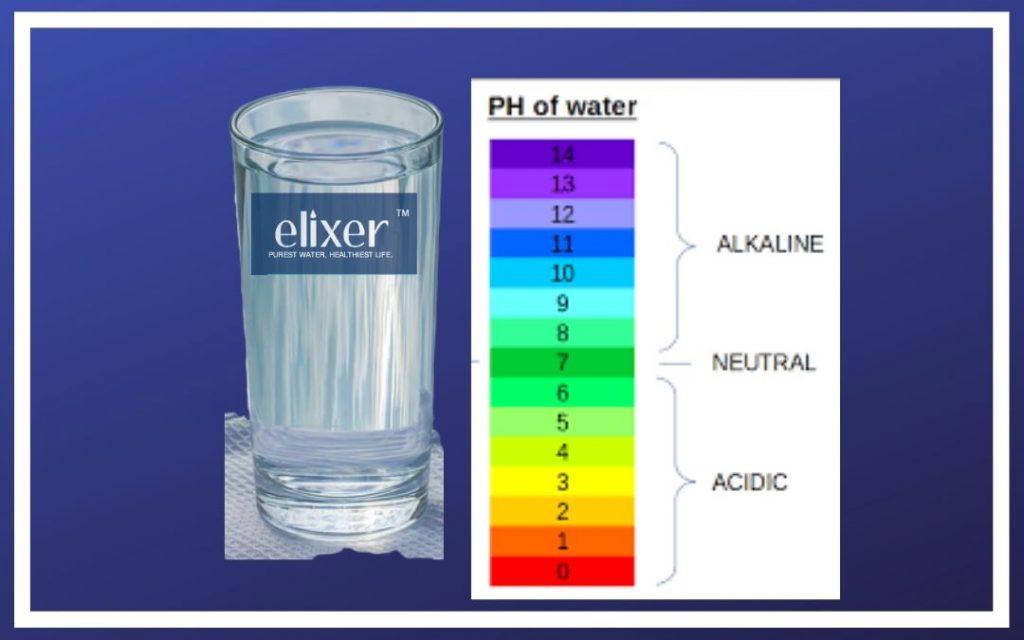The pH Value Of Purified Water — All You Need To Know
We all prefer to have access to safe and clean drinking water that is free of any toxicity at all times. According to safety standards, having a good pH balance is also vital. It plays a significant role in overall health, and this fact is generally agreed upon by health professionals including scientists.
pH is a measure of hydrogen ions concentration and it indicates how acidic or alkaline a substance is. The level of pH in your body is determined by the food and the kind of drinks you consume. The measurement of pH is based on a scale ranging from 0 to 14. It is worth noting that a pH of 7 is the neutral level, below 7 is acidic and above 7 is the basic level.
Drinking water must have a pH between 6.5 to 8.5 on the scale, which is the recommended measure given by the U.S Environmental Protection Agency. Water having a pH range outside of this recommendation indicates the presence of contaminants like metals or chemicals in the water.
The pH value of purified water is 7, which the best pH level.
But first, let us understand in detail what we mean by pH.
What is pH?
pH or the potential hydrogen level is a measure of H+ ions as against OH- ions in a substance. It tells us whether an aqueous solution is acidic or alkaline (basic). Like already mentioned, a pH level below 7 indicates acidic nature – processed foods like cheese, yoghurt, and fish, above 7 shows alkalinity or basicity – vegetables like beets, bell peppers and kale, and 7 is neutral pH levels. Not all liquids – gasoline, vegetable oil, pure alcohol – have a pH value.
How is pH measured?
pH is usually measured using three methods. They are laboratory pH meter and electrode, pH “pocket pals” and multi-parameter probes, and colour comparators/pH strips. The pH meter and electrode offer the highest level of precision and accuracy. The electric potential, which is a function of H+ activity in the water, is measured. The calibration is done using two buffer solutions.
pH “pocket pals” and multi-parameter probes are electronic testers which provide the digital output of the tested water when directly dipped into the water body. They can be easily carried, and are usually used in the field.
Conversely, in colour comparators, a reagent that is added to the sample, that colours it to give a visual comparison. pH strips are dipped directly into the water body and the colour of the strip changes depending on the pH level of the dipped sample. A chart is then used to determine the pH level of the sample obtained.
Why is the pH of water important?
Most living organisms inhabiting various water bodies require a range of pH levels for optimal growth, survival, and reproduction. 6.5 to 8 is ideal to maintain optimal physiological stability. If it changes to outside this range, they won’t be able to function properly.
The acidity found in the body can, in addition to food habits and other factors, be a result of the water we drink. Water with high acidity levels is so because it hasn’t been gone through proper filtration measures, and contains pollutants. Too much acidity has been linked to reduced bone density and risk of problems with the heart or liver. Extreme cases can lead to other complications.
On the other hand, water with a pH level of 8 or slightly above, has been shown to have some health benefits. It has shown to benefit people with acid reflux, high blood pressure and diabetes. Thus, we must make sure we consume water that is at the right pH level, or it’s pure water – free of impurities.
The pH Value of Purified Water
When a particular water source has been rid of all impurities, it is called pure water or purified water. The pH value of purified water is seven, as the concentration of hydrogen and hydroxide ions is equal, making it neutral. Purification systems have alkaline filters which can neutralize the acidity in water to bring the pH value to 7.
Oxidation processes also help maintain pH levels which are disturbed when the water that comes through pipes gets contaminated with impurities. Technology and attention to detail in combination, has enabled the removal of contaminants, sediments and impurities up to 99 per cent while balancing the pH levels and adding electrolytes.
Purified water can be your best water source for consumption if the impurity levels in water are extremely low if not removed at all costs, as both tap water and filtered water can pose different problems due to varying pH levels and their cleaning processes.
It is important to know the difference between purified water and normal water so that you do not fall sick by drinking the wrong type of water.
Conclusion
Municipal water suppliers do a good job of ensuring that water is maintained at a pH level of 7, hence testing at home isn’t required. The effects of drinking too much alkaline or acidic water can be dangerous and cause health concerns if not regulated properly. Corroded pipes should be inspected and changed by a professional plumber, as the corrosion can cause discolouration of drinking water, thereby disturbing pH levels.
If your water is within the recommended EPA range of 6.5 to 8.5, there is reason to be alarmed or take action. When it is outside this range, it is time to act. Having home test kits makes it fairly easy to test pH levels at home.
It is essential for you to always drink water that is pure and has the right pH levels. With SKF water purifiers, you will always know for sure that you are drinking the best quality water that has healthy pH levels. Get the best water purifiers for your home and commercial needs. Learn more about how SKF water purifiers can keep you and your loved ones safe and healthy by clicking here.



Recent Comments